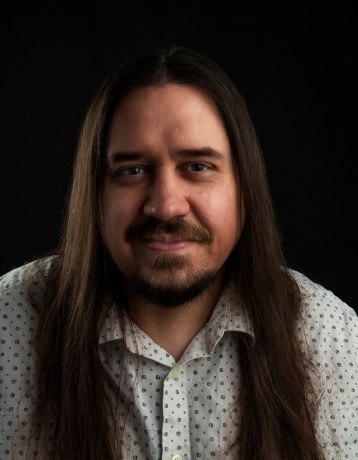Ahimsa Timoteo Bodhrán
BIOGRAPHY
Ahimsa Timoteo Bodhrán is a multimedia artist, activist/organizer, critic, and educator. A National Endowment for the Arts Fellow, he is author of the poetry/photography chapbooks, Archipiélagos; Antes y después del Bronx: Lenapehoking; and South Bronx Breathing Lessons. Bodhrán is editor of the Fall 2010 issue of Yellow Medicine Review: A Journal of Indigenous Literature, Art, and Thought, with 93 contributors from around the world. He is co-editor of the Native dance/movement/performance issue of Movement Research Performance Journal, with 42 international contributors. Bodhrán organized an international Indigenous roundtable dialogue on issues of water for Hawai‘i Review. His work appears in Arab publications across the U.S., Canada, Lebanon, and Morocco. His visual art and videos have been shared across the U.S. and Australia. He continues to work with diverse communities to create multimedia dance works. An activist and community organizer since he was a teenager, Bodhrán continues to be active in movements for equality, justice, and liberation.
PROJECT
Ahimsa Timoteo Bodhrán is completing Yerbabuena/Mala yerba, a multigenre book comprised of poetry, nonfiction prose, and hybrid work, and a larger multimedia project weaving visual art, sound, movement, and text. Yerba remaps New York and California, the East/West Coasts, and Atlantic/Pacific worlds, weaving personal, familial, and communal histories, presents/presences, and potential futures. Bodhrán hopes the project will illuminate the power of politicized intersectional identities and ethical solidarities in progressive coalition-building, and help mobilize more effective movements towards the liberation, decolonization, and sovereignty of oppressed lands, bodies, and cultures. Bodhrán is interested in Moroccan history and geography, aesthetics and creative traditions (visual/sonic/written/movement), mathematics and sciences, environmental work, layers of identity, cultural/linguistic diversity, and notions of space-time. In what ways can the world (and cosmos) be understood in new (and old) ways if Morocco is placed at the center? How might we re-understand the universe of our relations if Morocco is recognized as pivotal? Accessing the various communities, artistic traditions, and ecosystems in the region will ground Bodhrán’s creative work and political thinking about place, race, situatedness, and personal, communal, and environmental change. He hopes his time at Nawat Fes will illuminate our interconstellations, the ways our survivals and thrivals are inextricably interwoven.

